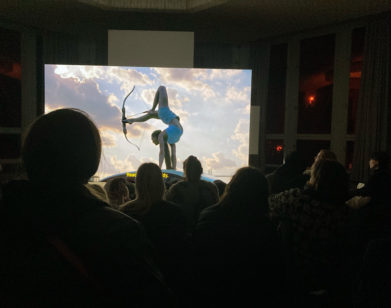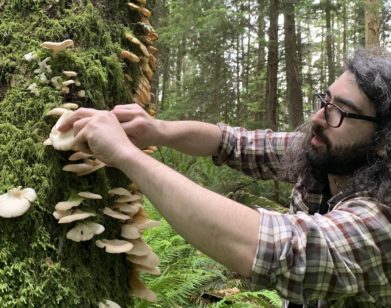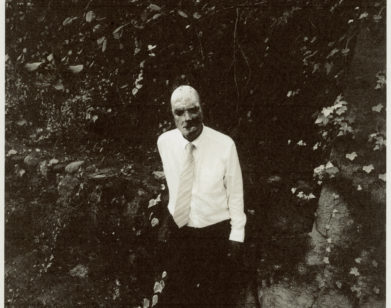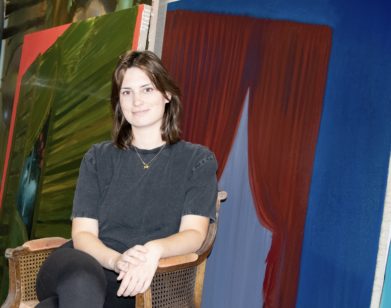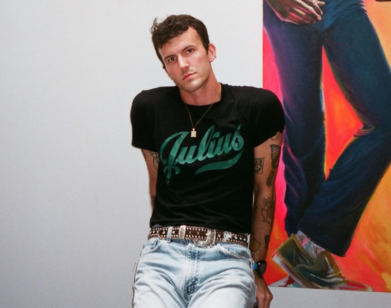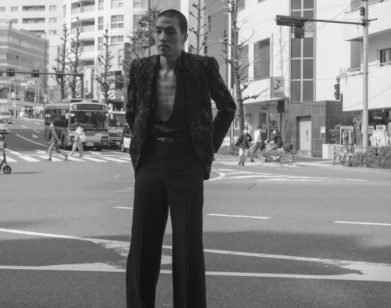Inside the extraordinary exhibition celebrating designer Azzedine Alaïa
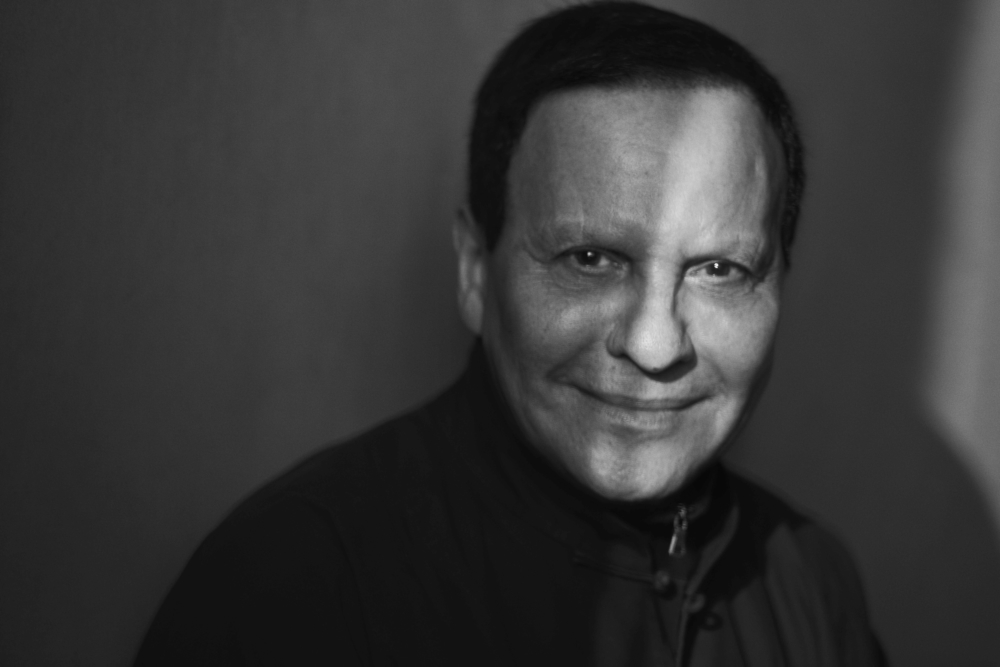
AZZEDINE ALAÏA PHOTOGRAPHED BY PETER LINDBERGH. IMAGE COURTESY OF THE DESIGN MUSEUM.
When news of Azzedine Alaïa’s passing broke last November, the fashion set mourned the loss of one of the most creative and inventive designers the industry has ever seen. As a designer, Alaïa never conformed to the standards of the rag trade—meaning when fashion week rolled around, he would never force out a collection just because he felt pressured to create something to show—and championed exquisite craftsmanship in all of his garments.
His hand-crafted pieces—he would fit his clothing on the models himself—demonstrate how much he cared about every detail of each garment and in that sense, his clothing is his true legacy. In the same spirit, the upcoming exhibition at the Design Museum in London, Azzedine Alaïa: The Couturier, will not be a full career retrospective of the Tunisian-born, Paris-based designer, but rather showcase 60 personally selected garments (some popular and others lesser-known) that will tell the story of Alaïa’s exceptional life.
We spoke to Gemma Curtin, who curated the exhibition, and Alice Black, the director of the Design Museum, to learn more about what viewers can expect to see in the exhibition that will honor this trailblazer, to hear more about his involvement in the process of designing the show, and to establish him as one of the great couturiers of his generation. The museum worked closely with the designer and his small team at the Maison Alaïa to recreate the intimate parts of Alaïa’s world while also celebrating his tremendous legacy.
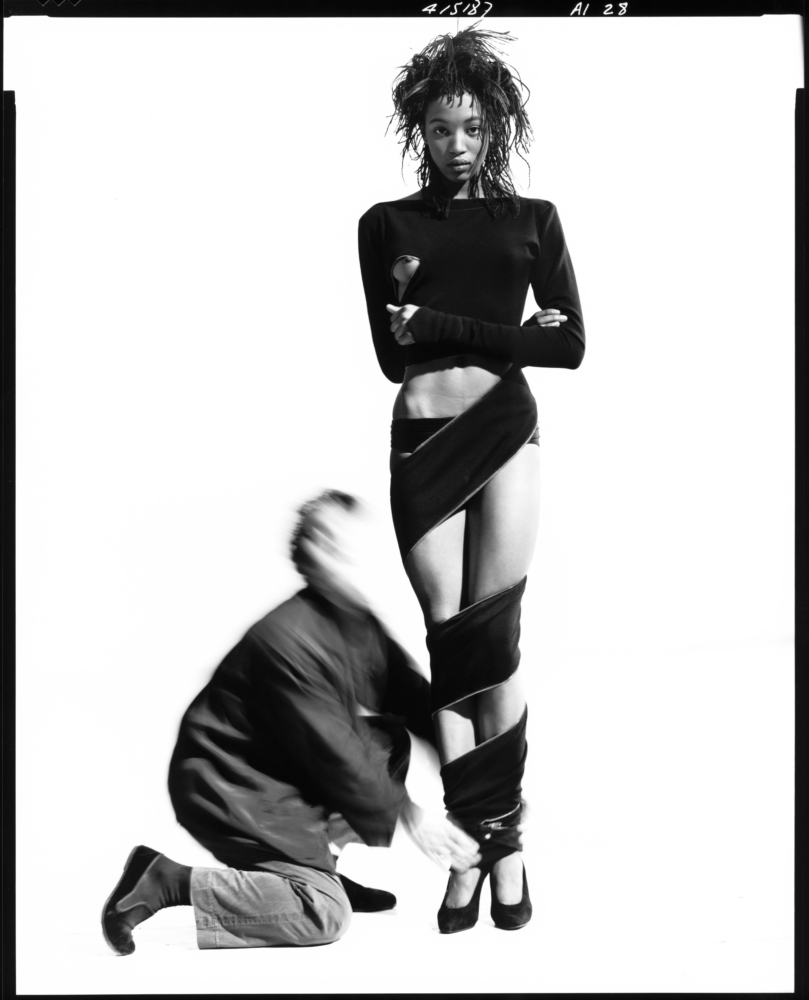
PHOTOGRAPH BY ARTHUR ELGORT. IMAGE COURTESY OF THE DESIGN MUSEUM
AUSTEN TOSONE: How will the exhibition be organized?
GEMMA CURTIN: At the core of the Design Museum exhibition is a beautifully lit and atmospheric display of garments from Maison Alaïa, each dressed on a bespoke transparent mannequin that allows the garments to appear unsupported. Alaïa’s dresses from his figure-hugging forms to his full volume formal pieces will be shown as themes or groups to express his distinctive approach and interests. The groupings will present pieces from different periods of his work together.
The exhibition will be a rare opportunity to see Alaïa’s mastery of couture. These garments, dating from the mid 1980s to ‘looks’ not yet seen in public that he was working on at the time of his death express the timeless and enduring nature of his designs.
TOSONE: This exhibition was conceived and co-curated by Alaia. What was it like to work with him?
ALICE BLACK: I met Azzedine Alaïa back in April 2017. He made his mind up quickly that he wanted to work with the Design Museum on an exhibition. He had a pretty definite idea of what he wanted to do early on—he had this idea to commission screens from designers and artists to create the structure of the exhibition—so he approached Mark Newson, Konstantin Grcic, and the Bourroullec brothers to work on these. I think he enjoyed seeing his work as part of a dialogue with other art forms—the exhibition staged at the Galleria Borghese was a spectacular installation against the backdrop of the Galleria’s stunning architecture and Bernini sculptures, his installation at the Palais de Tokyo, against the backdrop of the Matisse cut-outs was also a wonderful juxtaposition. So in the context of the Design Museum, his approach was to show his work against the work of designers and artists he admired, as well as framed with the photography of Richard Wentworth, who had worked with Azzedine, documenting his work in the studio over the last few years. He was such a strong personality, not aggressive at all, but incredibly charismatic—he was very clear in what he wanted and what he didn’t want, no second guessing needed!
TOSONE: How does this show compare to previous exhibitions of Alaïa’s work?
CURTIN: In past exhibitions, Alaïa has presented his clothes alongside works of art or sculpture, and for the Design Museum exhibition, Alaïa, a collector of design, was inspired to present his work against a backdrop of design. He commissioned screens by five leading contemporary designers and artists; Ronan & Erwan Bouroullec, Konstantin Grcic, Marc Newson, Kris Ruhs, and Christoph von Weyhe. These metal and glass screens will provide a dramatic architectural backdrop and intersect the groups of garments to provide new, stimulating visual connections.
To give some context to the garments, a large area of the gallery wall space will be hung with photographs by the artist Richard Wentworth. He was given unique access to the atelier during 2016 and 2017. His acute sense of observation focuses on the day to day activity of couture. The painstaking processes behind the glamour. The exhibition will also have film footage of Alaïa working as well as showing some of his runway shows.
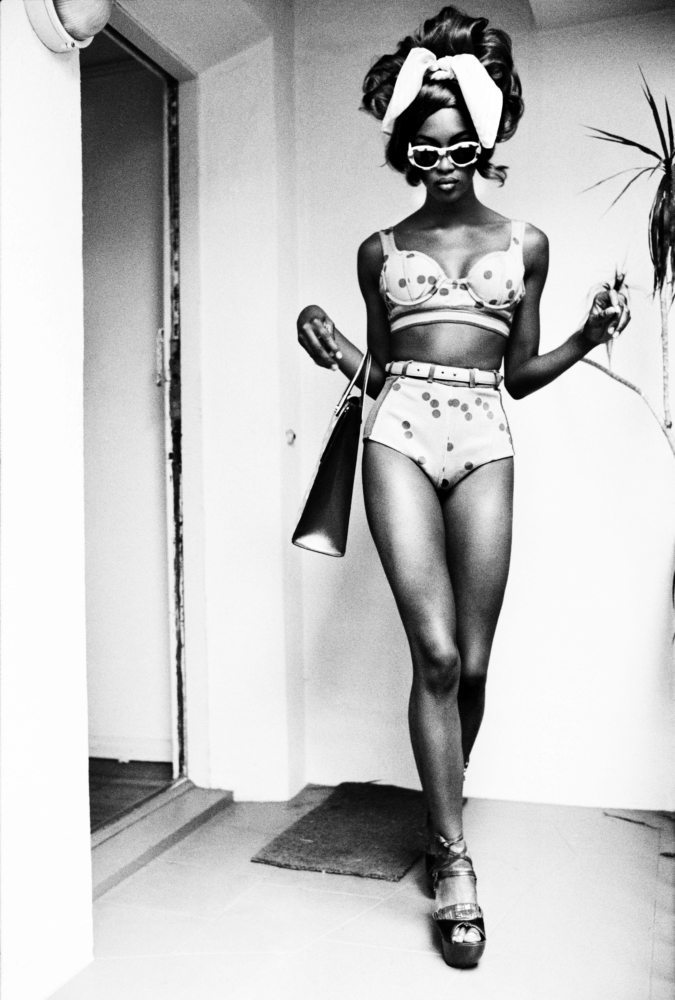
PHOTOGRAPH BY ELLEN VON UNWERTH. IMAGE COURTESY OF THE DESIGN MUSEUM
TOSONE: Alaïa always championed craftsmanship and quality. How does that attention to detail come through in this exhibition?
BLACK: We will have around 60 garments on show in the exhibition, as well as striking photography by Richard Wentworth. Visitors will be able to see these garments up close, not behind glass vitrines, from all angles. And this will give them an appreciation of the work and detail that goes in the creation of the dresses. The photography is also instrumental in showing close ups of Azzedine’s work. We have kept it to a simple exhibition design intentionally to let his work shine through.
TOSONE: How did the rest of the fashion industry view Alaïa?
CURTIN: Alaïa refused to conform to the relentless timetable of the fashion world and would famously present his clothes when they were ready. Yet he was loved and respected by his peers in fashion; to them he was a reminder of what was at the heart of their industry—inspirational clothes, made with intense creativity, intelligence and care that allow the wearer to look wonderful and feel confident. Within the walls of his studio at 7 Rue de Moussy, in the historic Le Marais quarter of Paris, Alaïa chose to follow his own path and pace of creativity refusing to conform to the demands of the ever-changing world of fashion.
TOSONE: Do you have a favorite piece or section of the show?
CURTIN: One of the sections is devoted to examples of only black garments. Black was one of Alaïa’s favourite colours: “I like black, for me it is a very happy color,” he would say. From his incredible treatment of leather to his manipulation of the finest chiffon, his use of black draws attention to the form and cut of his clothes. They are like pieces of engineering—from a bolt of fabric to intricate and desirable three-dimensional forms, that are in harmony with a woman’s body.
TOSONE: What were some of the challenges you faced when working on this exhibition?
BLACK: Sadly, the biggest challenge we faced with the exhibition was his passing back in November 2017, just as we were in full exhibition preparation mode. Would it go ahead, would it not? Staging an exhibition requires a lot of intense work and coordinating many different activities, from honing the concept and narrative, preparing the text, to the 3D design, the graphics etc. Some conceptual work, some very practical and logistical.
So it was quite an undertaking to proceed, in the midst of the huge upset that we all felt. His team has worked incredibly hard on the exhibition, they decided that it should go ahead, because he very much wanted it, so we all pulled together and worked really hard over the last few months to make it happen. We took the view that the exhibition should not change in concept, it should be the exhibition that he wanted and we would do what we could to remain true to his vision. Nothing prepares you for something like that, but between the museum team and the Alaïa team, we all wanted to do our very best to honor his memory and present the best exhibition we possibly could stage.
“AZZEDINE ALAÏA: THE COUTURIER” AT LONDON’S DESIGN MUSEUM OPENS MAY 18, 2018.

